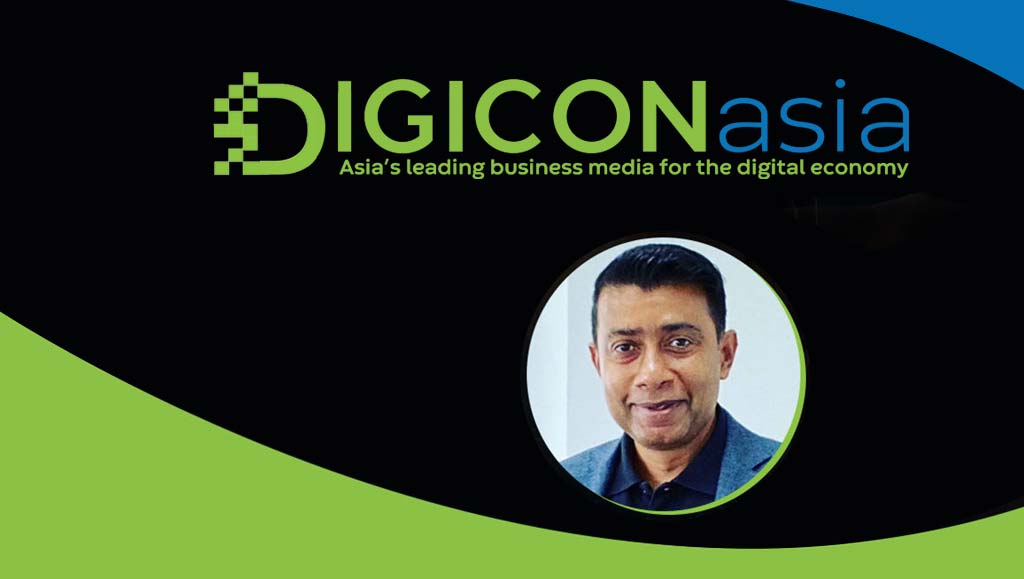How modeling technologies help reduce business challenges in a digital world
Published on: DigiconAsia The COVID-19 pandemic made physical things such as retail premises and services...

The COVID-19 pandemic made physical things such as retail premises and services outmoded — unless they could be experienced digitally as well.
For many years, solutions in the past were created either in a physical form or the in digital world.
Most recently, the COVID-19 pandemic made physical things such as retail premises and services outmoded — unless they could be experienced digitally as well.
Today, with predictive technologies, data and IoT, solutions can comprise a merger of the two worlds (physical and digital transformation => ‘phygitalization’), transforming and optimizing the way we manage projects — from urban planning to construction.
According to Ravi Koka, CEO, Digile Group, digital twin simulation and ‘phygitalization’ can bring ideas and concepts to solve complex design, construction, and asset management challenges.
DigiconAsia: Can you elucidate readers on emerging concepts in IoT that can help Asian businesses overcome various challenges?
Ravi Koka (RK): Businesses are faced with complex challenges along their supply chain, under immense pressure to test, optimize, and produce their products in the shortest time, while ensuring the highest level of quality at the lowest cost. There is also an increasing need to ensure sustainability at all stages of the supply chain.
With digital twin modeling, businesses in Asia can simulate and map the different features and functions of a product before going into production. They can effectively customize their solutions, and plan and execute the production process in a realistic and optimized way.
A digital twin is a virtual replica of physical objects. As the name represents, a digital twin of a product can be used for realistic simulations of every part of the product or infrastructure — to optimize and reduce costs of the design, development, and manufacturing process.
We can create a digital twin of an entire asset with the integration of sensor information for efficient asset management and other innovations like connected data environment, iModels, and 4D construction modeling. Such modeling technologies can be used to detect issues early, save on development resources and reduce cost overruns.
Most importantly, processes can be optimized not only in costs and performance but also in safety, energy efficiency, and sustainable resources.
DigiconAsia: What about phygitalization?
RK: The emergence of ‘phygital’ technologies — where traditional methods of production integrating with digital technologies — has revolutionized the industry and across sectors such as automotive and manufacturing. Together with cloud-based platforms, digital twin modeling and data analytics, phygitalization can overcome and preempt numerous business challenges:
- Cloud-based platforms
Cloud-based platforms play a crucial role in the merger between physical and digital worlds. The cloud is an essential tool for companies as a centralized data storage center to handle large volumes of big data. It also allows manufacturers to analyze the data across the entire ecosystem, to improve processes and mitigate risks. - Digital twin modeling
With this technology businesses can easily view and analyze the state of a modeled physical asset. Therefore, it allows manufacturers to test scenarios, predict maintenance needs, and reduce downtime as much as possible. - Big data analytics
Large volumes of data from existing infrastructure, reality models, digital resources, and sensors can be unified to offer timely insights about projects and asset performance.
DigiconAsia: What are the necessary considerations for a business to implement these types of technologies?
RK: To make implementations of such emerging technologies successful, our experts work with clients to help define short, mid, and long-term goals for data and architectural choices, considering factors such as budget, resources, and overall business strategy.
We also work to establish a roadmap for achieving these goals, including a timeline for implementation, milestones, and success metrics.
In short, we want to ensure that we prioritize solutions that align with the organization’s business objectives. Therefore it is important to establish a roadmap for implementation so that clients can maximize the value of their technological solutions.
For more updates, follow us on LinkedIn, Twitter, Facebook, Instagram, and YouTube
